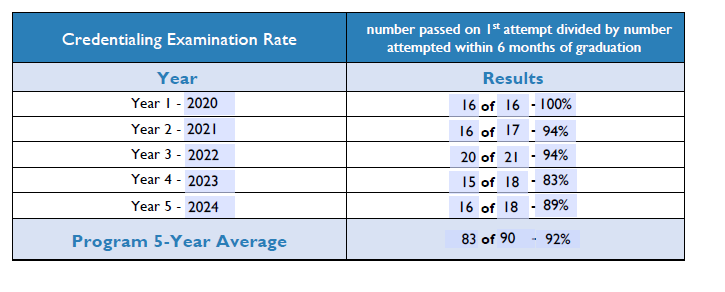
Important Update regarding changes to Prerequisite Courses for admission to Rad Tech Program!
Beginning with Summer 2025, RADT 99 Community Engagement Related to Medical Imaging will no longer be offered. RADT 99 is no longer a prerequisite course for the Rad Tech Program. See Application Worksheet on the Getting Started tab for more information about credit for having taken the course prior to Summer 2025.
Are you interested in a career as a RADIOLOGIC Technologist?
Radiologic Technology is the health profession concerned with medical imaging for diagnosis and assessment of disease. Radiologic Technology is known by other names including x-ray technology, radiologic technology, radiography, and diagnostic imaging. The radiologic technologist provides a unique blend of direct patient contact with the study of human anatomy and rigorous medical technical expertise. Graduates with a degree in this field are referred to as registered radiologic technologists or radiographers. The career opportunities are numerous and diverse.
The radiologic technologist's main duty is to provide quality patient care and high quality medical images while applying knowledge of anatomy, physiology, positioning, radiographic technique, and precise scientific knowledge. Effective communication with patients, other health professionals, and the public is important. Additional duties may include management of images, evaluating radiologic and computer equipment, performing quality assurance procedures, and providing patient education relevant to specific imaging procedures.
Radiologic Technology at SRJC
The Radiologic Technology Program at SRJC was established in 1971. Both a certificate and a major AS degree in Radiologic Technology is available. The program includes instruction in the operation of x-ray and digital imaging equipment, positioning for radiologic procedures, creating and processing images, patient care, radiologic physics, radiation protection and observational experience in other advanced imaging modalities.
The Radiologic Technology program at SRJC spans 23 consecutive months including 2 fall, 2 spring and 2 summer semesters. Students are required to commit themselves for full time participation for that entire duration. In addition to the didactic coursework, a minimum of 1850 clinical hours are required in hospitals and radiology departments affiliated with Santa Rosa Junior College. Elective clinical experience in Mammography and MRI is available. Fundamental knowledge of CT and cross sectional anatomy is included in our core curriculum.
The latest Radiologic Technology Student Handbook and Clinical Competency Handbook are available for review.
NECESSARY SKILLS
The Radiologic Technology curriculum requires students to engage in diverse, complex, and specific experiences essential to the acquisition and practice of essential health care skills and functions. Unique combinations of cognitive, affective, psychomotor, physical, and social abilities are required to satisfactorily perform these functions. In addition to be essential to the successful completion of the requirements of the Radiologic Technology program, these technical standards are necessary to ensure the health and safety of patients, fellow candidates, faculty, and other healthcare providers.
Please visit the TECHNICAL STANDARDS section of our website to read about some of the skills necessary to work as a Radiologic Technologist.
ACCREDITATION:
The Radiologic Technology program is accredited by the Joint Review Committee on Education in Radiologic Technology, (JRCERT)
20 North Wacker Dr., Suite 2850
Chicago, IL 60606-3182
312-704-5300
E-mail: mail@jrcert.org
The program's current accreditation award is 5 years. General program information and the current accreditation award letter can found here: https://www.jrcert.org/programs/santa-rosa-junior-college/
APPROVAL: The SRJC Radiologic Technology Program is approved by the California Department of Public Health Radiologic Health Branch as an educational program for radiologic technology.
MS 7610
P.O. Box 997414
Sacramento, CA 95899-7414
THE MISSION OF THE SONOMA COUNTY JUNIOR COLLEGE DISTRICT
Santa Rosa Junior College transforms the lives of our culturally rich student body, employees, and community by cultivating a welcoming and antiracist environment, centered on social responsibility and cultural awareness. We offer exceptional teaching and learning in support of associate degree, certificate, transfer preparation, workforce preparation and community education programs, integrated with comprehensive student support services.
Program Mission
The Radiologic Technology Program at Santa Rosa Junior College offers exceptional teaching and learning in support of students to prepare them for workforce success as competent radiologic technologists in the healthcare community that they serve.
Program Goals and Student Learning Outcomes

Program Effectiveness Data
This data is also posted at the Joint Review on Education in Radiologic Technology (JRCERT) website:
The following is the most current program effectiveness data. Our programmatic accreditation agency, the Joint Review Committee on Education in Radiologic Technology (JRCERT), defines and publishes this information. Click here to go directly to the JRCERT webpage.
Credentialing Examination: The number of students who pass, on the first attempt, the American Registry of Radiologic Technologists (ARRT) certification examination, or an unrestricted state licensing examination, compared with the number of graduates who take the examination within six months of graduation. The five-year average benchmark established by the JRCERT is 75%.

Job Placement: The number of graduates employed in the radiologic sciences compared to the number of graduates actively seeking employment in the radiologic sciences within twelve months of graduating. The five-year average benchmark established by the JRCERT is 75%.The JRCERT has defined not actively seeking employment as: 1) graduate fails to communicate with program officials regarding employment status after multiple attempts, 2) graduate is unwilling to seek employment that requires relocation, 3) graduate is unwilling to accept employment, for example, due to salary or hours, 4) graduate is on active military duty, and/or 5) graduate is continuing education.

Program Completion: The number of students who complete the program within the stated program length. The annual benchmark established by the program is 80%.

JRCERT Standards:
Nondiscriminatory recruitment practices assure applicants have equal opportunity for admission. Defined admission practices facilitate objective student selection. In considering applicants for admission, the program must follow published policies and procedures. Statistical information such as race, color, religion, gender, age, disability, national origin, or any other protected class may be collected; however, the student must voluntarily provide this information. Use of this information in the student selection process is discriminatory.